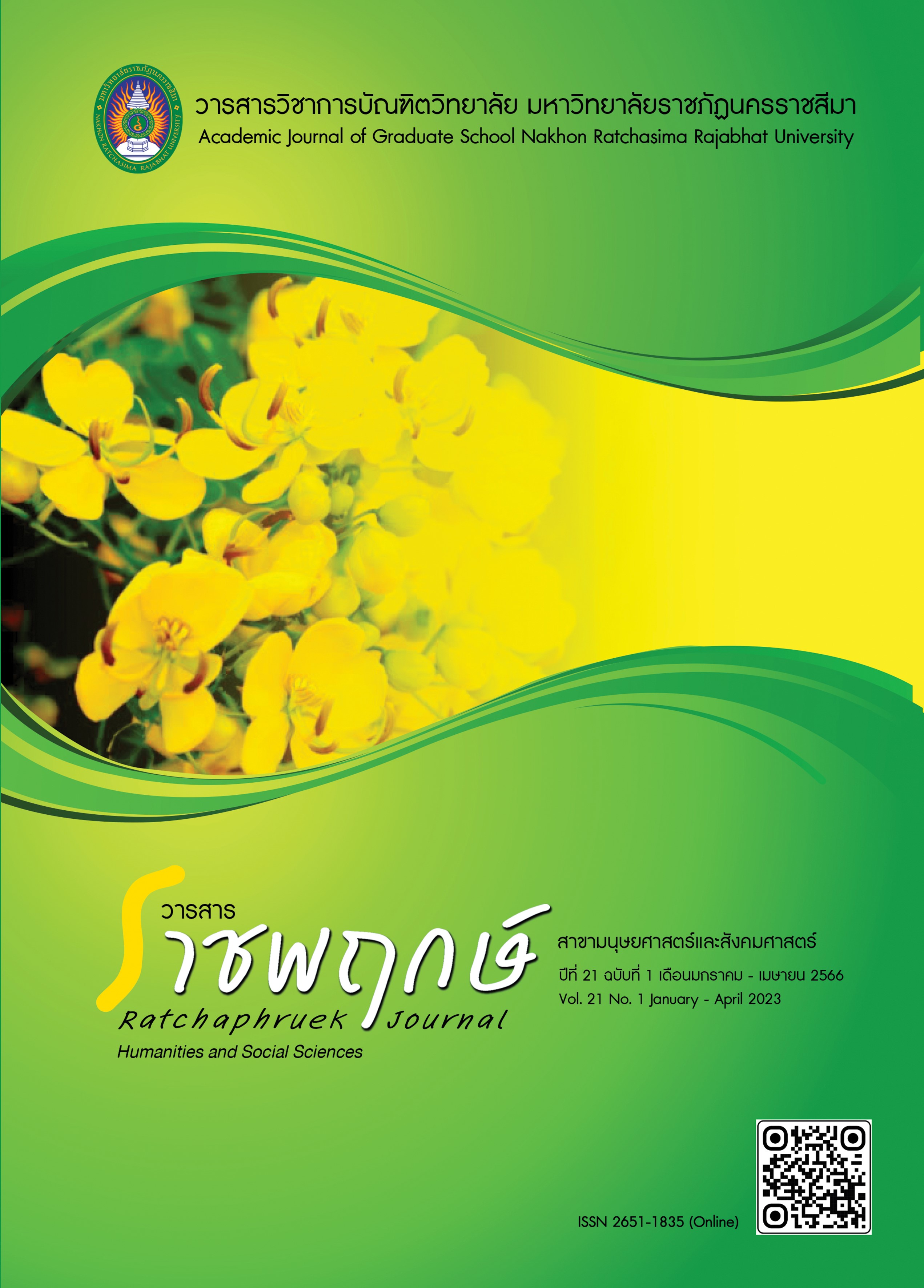การพัฒนาหลักสูตรเสริมสร้างกรอบความคิดแบบเติบโต สำหรับนักเรียนระดับชั้นมัธยมศึกษาตอนต้น
Main Article Content
บทคัดย่อ
งานวิจัยนี้มีวัตถุประสงค์เพื่อ1) ศึกษากรอบความคิดของนักเรียนระดับมัธยมศึกษาตอนต้น 2) พัฒนาหลักสูตรเสริมสร้างกรอบความคิดแบบเติบโตสำหรับนักเรียนระดับชั้นมัธยมศึกษาตอนต้น 3) ศึกษาผลการใช้หลักสูตร และ 4) ประเมินและปรับปรุงหลักสูตร กลุ่มเป้าหมาย คือ นักเรียนระดับมัธยมศึกษาปีที่ 2 ที่มีผลการวัดกรอบความคิดเป็นกรอบความคิดยึดติดจำนวน 5 คน ดำเนินการวิจัย 4 ขั้นตอน คือ 1) ศึกษากรอบความคิดของนักเรียนโดยใช้แบบวัดกรอบความคิดที่ผู้วิจัยพัฒนาขึ้น 2) พัฒนาหลักสูตรจากข้อมูลที่ได้ในขั้นตอนที่ 1 3) ศึกษาผลการใช้หลักสูตรจากนักเรียนกลุ่มเป้าหมาย และ 4) ประเมินและปรับปรุงหลักสูตรโดยการประเมินจากผู้ทรงคุณวุฒิและ การประเมินความพึงพอใจของนักเรียนต่อการใช้หลักสูตร เครื่องมือที่ใช้คือ แบบวัดกรอบความคิด หลักสูตร ความคิดเห็นของผู้ทรงคุณวุฒิและแบบประเมินความพึงพอใจ วิเคราะห์ข้อมูลโดยใช้สถิติร้อยละ ค่าเฉลี่ย ส่วนเบี่ยงเบนมาตรฐาน และสถิติ Wilcoxon Signed Ranks Test
ผลการวิจัยพบว่า 1) นักเรียนระดับชั้นมัธยมศึกษาตอนต้นส่วนใหญ่มีกรอบความคิดแบบผสม 2) หลักสูตร มีความเหมาะสมในระดับมาก ( = 4.18, S.D.= 0.34) 3) นักเรียนมีกรอบความคิดหลังการทดลองสูงกว่าก่อนทดลองอย่างมีนัยสำคัญทางสถิติที่ระดับ .05 และ 4) หลักสูตรมีความเหมาะสมต่อการนำไปใช้เพื่อพัฒนากรอบความคิดแบบเติบโตของนักเรียนและนักเรียนมีความพึงพอใจต่อหลักสูตรในระดับมาก
Article Details

อนุญาตภายใต้เงื่อนไข Creative Commons Attribution-NonCommercial-NoDerivatives 4.0 International License.
เอกสารอ้างอิง
เนตรนิยมาศ วรรณพยันต์. (2560). วิถีครูกับการพัฒนากรอบความคิดศิษย์. วารสารหาดใหญ่วิชาการ, 15(2), น. 185-195.
บุญชม ศรีสะอาด. (2553). การวิจัยเบื้องต้น (พิมพ์ครั้งที่ 7). กรุงเทพฯ: สุริวิทยาสาส์น.
พวงชมพู โจนส์. (2559). การสร้างกระบวนการทางความคิด (Mindset) สำหรับบุคลากรในสถาบันการศึกษาระดับอุดมศึกษา. วารสารธุรกิจปริทัศน์, 8(1), น. 1-9.
พิสณุ ฟองศรี. (2553). เทคนิควิธีการประเมินโครงการ (พิมพ์ครั้งที่ 7). กรุงเทพฯ: ด่านสุทธาการพิมพ์.
มุทิตา อดทน. (2561). ผลของโปรแกรมการพัฒนากรอบความคิดเติบโตในนักเรียนชั้นมัธยมศึกษาตอนปลาย (วิทยานิพนธ์มหาบัณฑิต, มหาวิทยาลัยบูรพา).
วิจารณ์ พานิช. (2559). เลี้ยงลูกยิ่งใหญ่. กรุงเทพฯ: เอส.อาร์.พริ้นติ้ง แมสโปรดักส์.
สุดหทัย รุจิรัตน์. (2558). รูปแบบการเสริมพลังเพื่อพัฒนาสมรรถนะการจัดการเรียนรู้ของครูที่ส่งเสริมการเรียนรู้อย่างมีความสุขของนักเรียนระดับประถมศึกษา (วิทยานิพนธ์ดุษฎีบัณฑิต, มหาวิทยาลัยศิลปากร).
สำนักงานเลขาธิการสภาการศึกษา. (2560). แผนการศึกษาแห่งชาติ พ.ศ. 2560-2579. กรุงเทพฯ:กระทรวงศึกษาธิการ.
Dweck. C. S. (2016). Brainology for Home. Mindset Works, Inc. Walnut, Ca. p. 28.
Dweck. C. S. (2017). Mindset Changing the way you thing to fulfil your potential. London; Hachette Uk.
Farrington, C. A., Roderick, M., Allensworth, E., Nagaoka, J., Seneca Keyes, T., Johnson, D. W., et al. (2012). Teaching adolescents to become learners: The role of noncognitive factors in shaping school performance: A critical literature review. Chicago: University of Chicago.
Krejcie, R. V. & Morgan, D. W. (1970). Determining Sample Size for Research Activities. Educational and Psychological Measurement, 30(3), pp. 607-610.
Lee, T. H. (2009). A structural model to examine how destination image, attitude, and motivation affect the future behavior of tourists. Leisure Sciences, 31(3), pp. 215-236.
Taba, H. (1962). Curriculum Development: Theory and Practice. New York: Harcourt. Brace and World.


